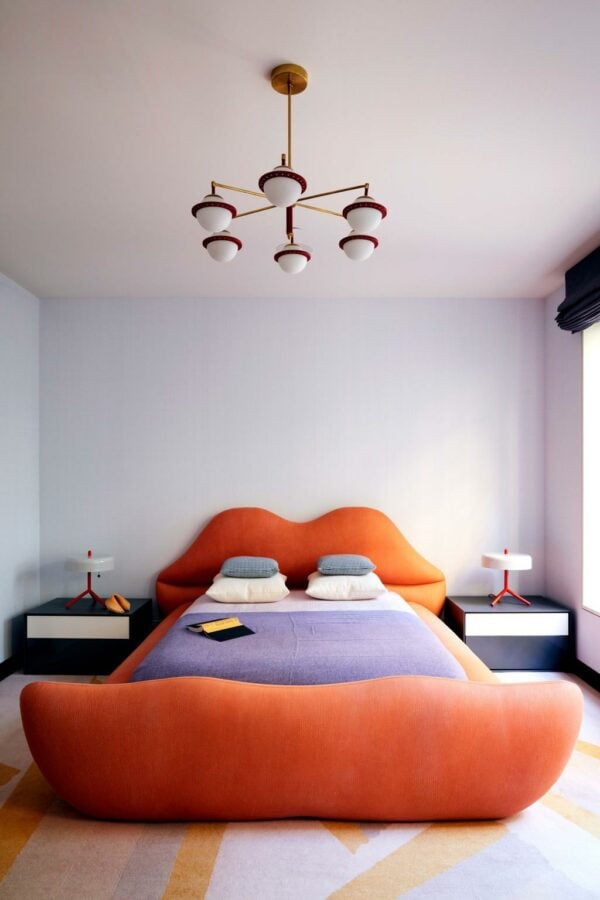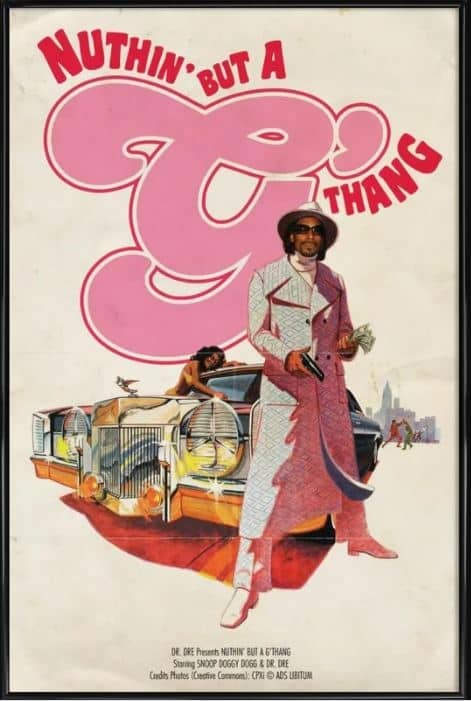Sleep Talk Blog, Inspire me
90's Bedroom Urban Style, Extra Achievable Tips for Your Décor
90's Bedroom
The 90's was a decade of heavy damask wallpaper, crushed velvet, bold colours, crazy interior patterns and animal furs. Think Austin Powers: International Man of Mystery, and you're on the right track to a typical '90s interior.
One of the forgotten interior design trends of the '90s was an urban style, which embraced hip-hop and street fashion for décor, and the concrete jungle when decorating to make modern yet colourful spaces that were playful and interesting.
The '90s haven't seen a design trend revival yet, but there are several '90s décor urban style trends you can use to give your bedroom a playful kick.
A Grey Bed was typical for a 90's Bedroom
Grey beds were trendy in the '90s because grey contrasts nicely with pops of colour. Metal bed frames were best-sellers as people embraced the promise of more outstanding durability over wood, although in practice, both last the same amount of time.
Look for a grey bed with a clean, non-ornamental frame. '90s beds embraced clean, simple lines, allowing bold colour schemes to shine through.

Layer in greys
The '90s embraced bold colours and crazy patterns, but underneath all that, bedrooms were nearly always decorated in white or grey. Grey grew in popularity, and by the mid-'90s, most bedrooms had layered greys for a soft, subtle look.
A monochrome all-grey colour scheme with different shades of grey and thick textures is an urban design favourite. Just add pops of colour for a playful vibe.
Neon wall lights
In the early '90s, interior designers embraced nightlife, and neon wall lights came into fashion in bedrooms.
The 1990s was a decade of diverse and sometimes contradictory design trends. Here are a few of the prominent interior designers of the era:
- Kelly Wearstler: Known for her bold use of color, pattern, and texture, Wearstler's designs are often described as Hollywood Regency meets Memphis Group. She rose to fame in the 1990s with her work on the Sunset Marquis Hotel in West Hollywood and has since designed homes for celebrities like Gwen Stefani and Billy Bob Thornton.

- Dorothy Draper: While not as active in the 1990s, Draper's influence on American interior design continued to be felt throughout the decade. Her signature style, known as "The Decorator's Touch," is characterised by using chintz, floral prints, and lacquered furniture.
- Alexa Hampton: Hampton is a traditional interior designer known for her elegant and timeless aesthetic. Her work often features classic furniture styles, rich fabrics, and neutral colour palettes. She has been named one of the "100 Best Designers" by House Beautiful magazine and has designed homes for celebrities like Brooke Shields and Michael Douglas.
- Tony Duquette: Duquette was a flamboyant and theatrical designer known for his over-the-top creations. His work often featured Hollywood Regency elements, such as mirrored furniture, animal prints, and lacquered finishes. He was a favorite of celebrities like Liberace and Barbra Streisand.
These are just a few of the many talented interior designers who shaped the look of the 1990s. The decade was a time of experimentation and eclecticism, and these designers helped to create some of the most memorable and iconic interiors of the era
The great thing about neon wall lights is they are timeless and available in a wide range of styles, colours and sizes. Tron (1982) started the trend for neon lights in nightclubs but only in the '90s did they find their way into homes.

Retro art
Although posters might make you think of a teenager's bedroom, you can get canvases and high-end posters framed as works of art.
Artsy retro posters of your favourite '90s films like Terminator 2: Judgment Day or your favourite musical artists are great ways to decorate your walls. Skip the Blu Tack and go for canvas art, framed posters and art prints.

Colourful furniture
The '90s embraced bold colours like orange, red, yellow, and green. You can do the same with seating, desks and other small pieces of furniture. You don't even need to buy new - a lick of paint is all you need to transform old furniture.
The key is not to go overboard with bold colours. The '90s was certainly colourful, but it only used splashes of colour where needed.
Blow up furniture
Love it or hate it, translucent blow-up furniture is quintessential '90s. It doesn't last long, isn't exceptionally comfortable, and a cat will destroy it when kneading. But it is cheap, and no other furniture offers such a bonified '90s vibe.

A blow-up chair in translucent lime green or orange is an excellent addition to any bedroom. Best of all, it's so light you can take it anywhere!
Distressed walls
One of the most polarising design trends of the '90s was distressed walls. Some thought distressed walls were ugly and rough, but others saw beauty in imperfection, stripping back wallpaper and paint to reveal bare plaster and stone.
Distressed walls are a '90s urban style trend you can use today to create a modern, stylish bedroom that has layers of texture built into it.
Decorative ceiling
While the '70s and 80s embraced textured ceilings in white, in the '90s, people preferred a contrasting ceiling in a darker colour. Bedrooms would often have a grey or coloured ceiling, with lighter greys a popular choice in small spaces.
Another design element fazed out in the '80s that made a comeback in the 90s was ceiling coving, often in a classic C-shape with a fluted profile.


